

Max Davies
2026 Toyota HiAce review
2 Hours Ago
The Ford Puma handles like a hot hatch, looks like a more expensive SUV, and has a sharp sticker price. Why doesn't it sell better?

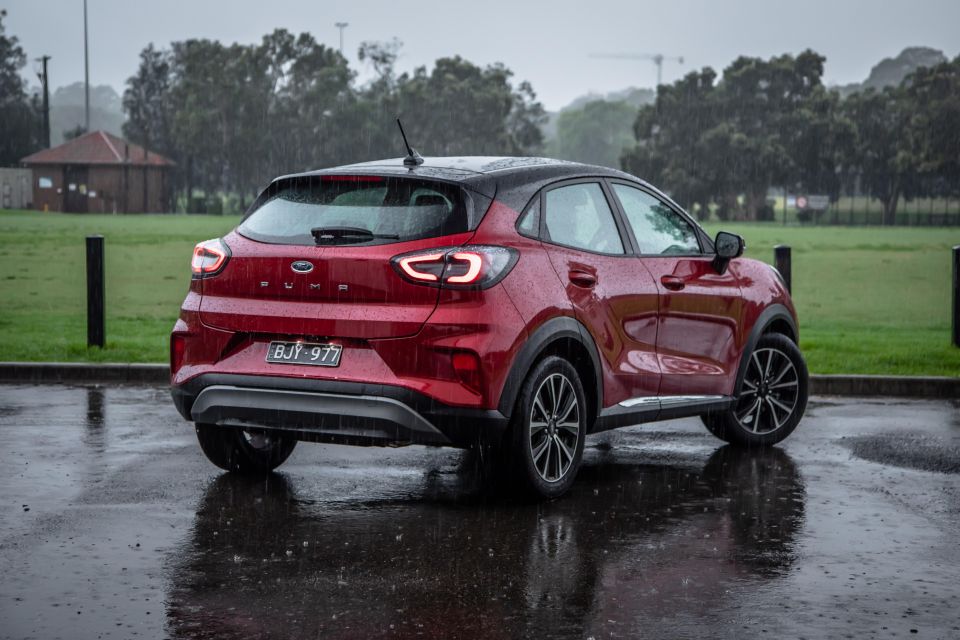

Quickly see how this car stacks up against its competition. Select any benchmark to see more details.
Where expert car reviews meet expert car buying – CarExpert gives you trusted advice, personalised service and real savings on your next new car.
The Ford Puma’s job just got a whole lot harder.

Currently, it sits below the well-known Escape in the Ford Australia range.
Come the end of 2023 though, and it will be forced to fly the small-ish SUV flag alone – the Escape is being axed, and no replacement is forthcoming. An electric Puma is also on the horizon.
With a handsome design that calls to mind the more expensive Porsche Macan, and sharp handling backed by a punchy turbocharged three-cylinder engine, the Puma has already proven it has plenty to offer in what’s a very competitive end of the new car market.
It’s also solid value in 2023.
Despite all of that, it’s not been a runaway sales success. To date in 2023 it’s ahead of only the Nissan Juke and Renault Captur on the sales charts, trailing the best-selling Mazda CX-3 by 5000 sales. Why?
Note: The images of the Ford Puma are from an earlier review. Our test car was the same colour and spec, with the same interior, but didn’t feature the black roof pictured here.
The Puma on test is the base model, the Puma FWD, with a sticker price of $30,340 before on-road costs.
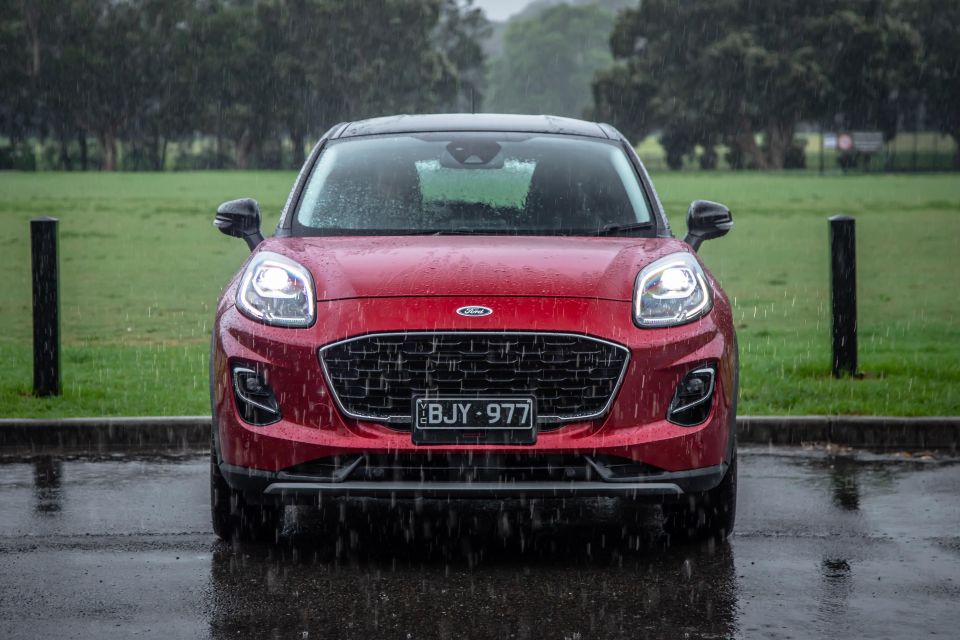
Adding the Park Pack ups the price by $990, while a black roof is an additional $500.
2023 Ford Puma pricing:
Prices exclude on-road costs
Key rivals include:
Prices exclude on-road costs
Buy your new car without the stress. It's fast, simple and completely free.

Great service from Travis and team, second time I have used this business would not hesitate to recommend them to anyone
Craig C.
Purchased a Ford Ranger in Sunshine Coast, QLD
CarExpert helped Craig save thousands on his Ford Ranger, now let us save you on your next new car.
Find a dealThere’s no hiding the links between the Puma and the Fiesta no longer on sale in Australia. Under the skin they’re the same car, after all.
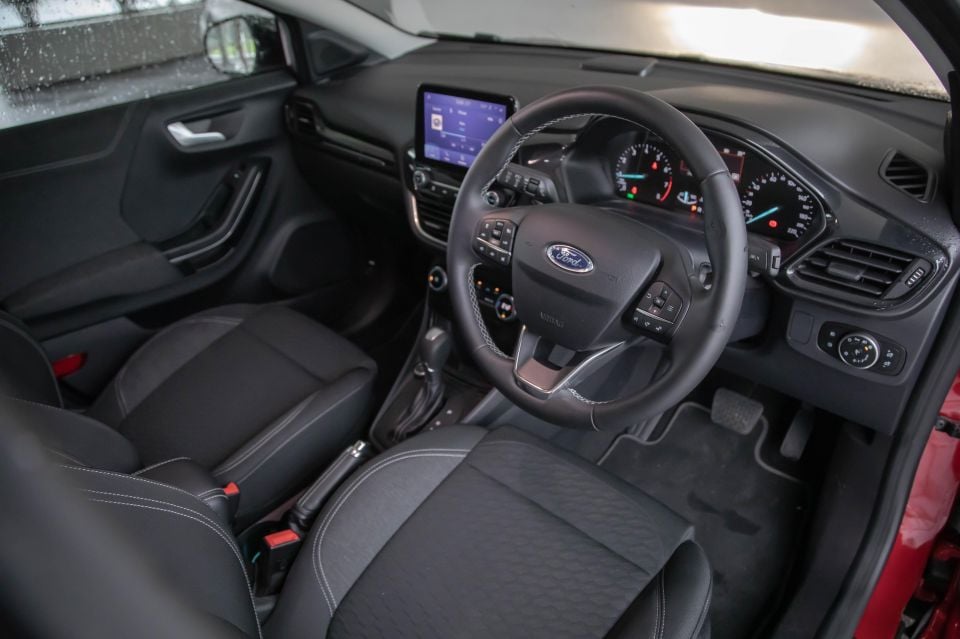
The driving position in the Puma is higher than that of the Fiesta though, and the seats in the Puma FWD are flatter units than the heavily-bolstered buckets in the defunct Fiesta ST.
Unlike in higher-end models with their sunroof, the base Puma has plenty of headroom for taller drivers. Its manually adjusted front seats have enough range to accomodate all body types, while the steering wheel itself is a quality item.
Real thought has gone into the touch points, as evidenced by the rubber-ringed dials, although the door grab handles are evidence of the Puma’s humble origins. This is an economy car at its core, but that’s easier to swallow given this is a $30k car instead of a $40k one like the range-topping ST-Line V.
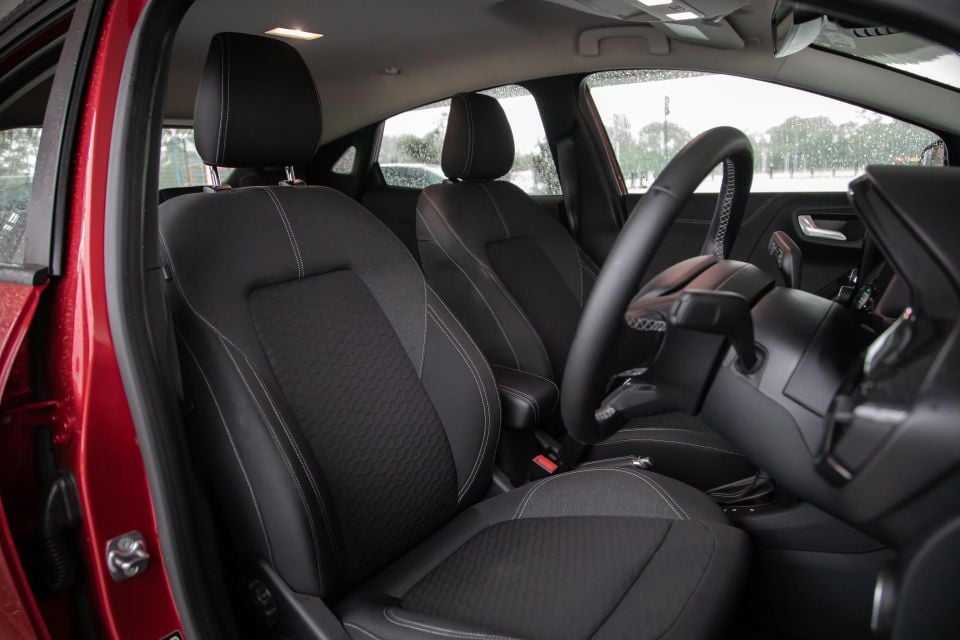
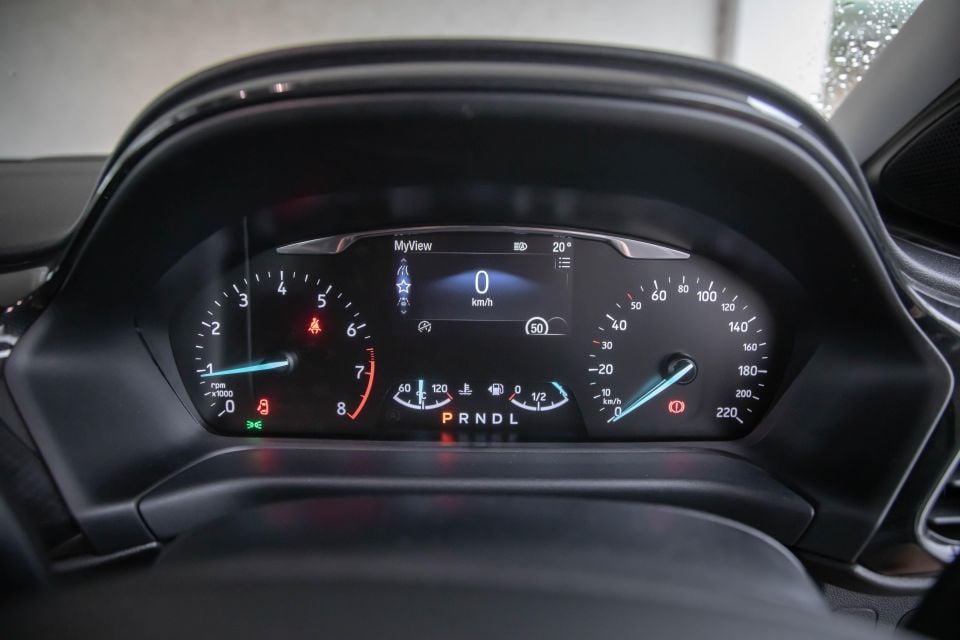
There are a few other ergonomic quirks. The manual handbrake obscures one of the storage spaces on the transmission tunnel and the tunnel itself is very narrow, which means broad-shouldered drivers and passengers will feel like they’re sitting on top of each other.
Ford has the technology basics sorted, as it tends to, although the 8.0-inch screen looks a bit small in 2023.
Sync 3 isn’t the flashiest infotainment system in the world, but it’s among the easiest to use. Everything is within easy reach, and its responses are sharp enough to feel natural for even the most dedicated smartphone users.

Apple CarPlay looks good on the display, and didn’t drop out or falter during our time behind the wheel. Extra points go to Ford for making it easy to turn the screen off – there’s a hard button below the display, which is as clever as it is rare.
Rivals are starting to move to wireless CarPlay, however, which is something we’d love to see in a Puma update.
The base model doesn’t get the flashy digital dials offered on higher-end Pumas, instead settling for simple analogue dials flanking a basic trip computer with a digital speedometer.
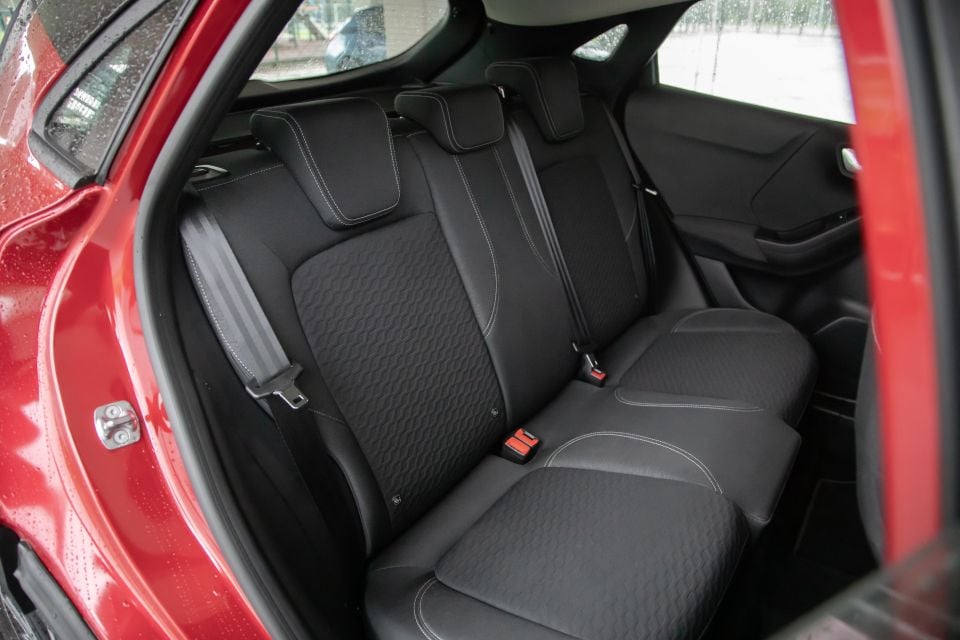
The rear seats feel like a bit of an afterthought compared to the lavish accomodation up front. Legroom behind a tall-ish driver is laughably bad, and headroom will be a problem for anyone but children back there thanks again to the optional panoramic sunroof.
Bundle in the fact there’s no rear air vents, no fold-down armrest, and little in the way of padding on the door trims, and it’s clear the Puma’s rear quarters are best reserved for little kids or adults you really don’t like.
Boot space is surprisingly good. The load area is deep and wide, with a claimed 376L of space with the rear seats in place, and another 34L in the plastic bin beneath the false floor but above the space saver spare.
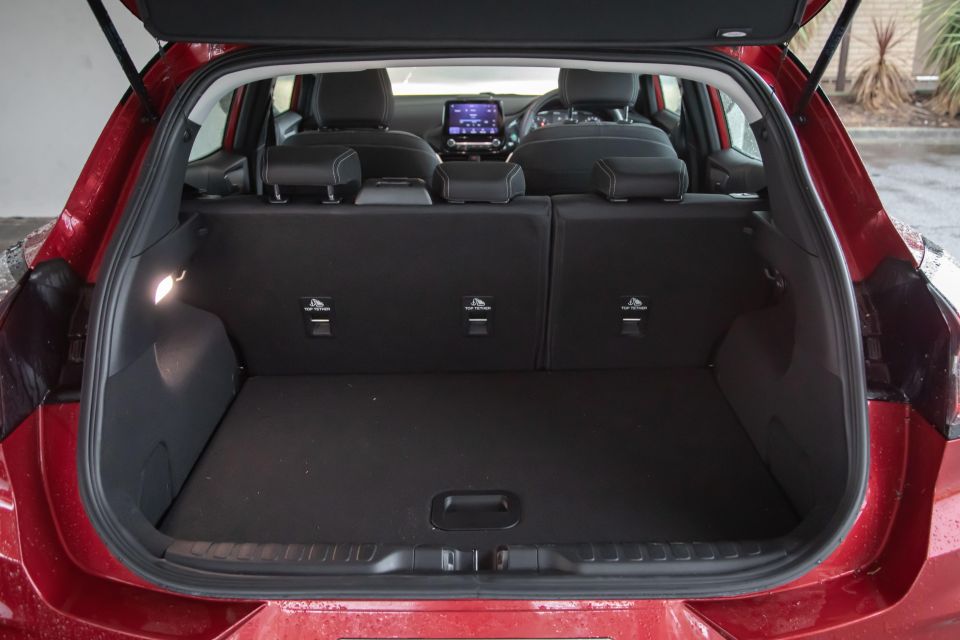
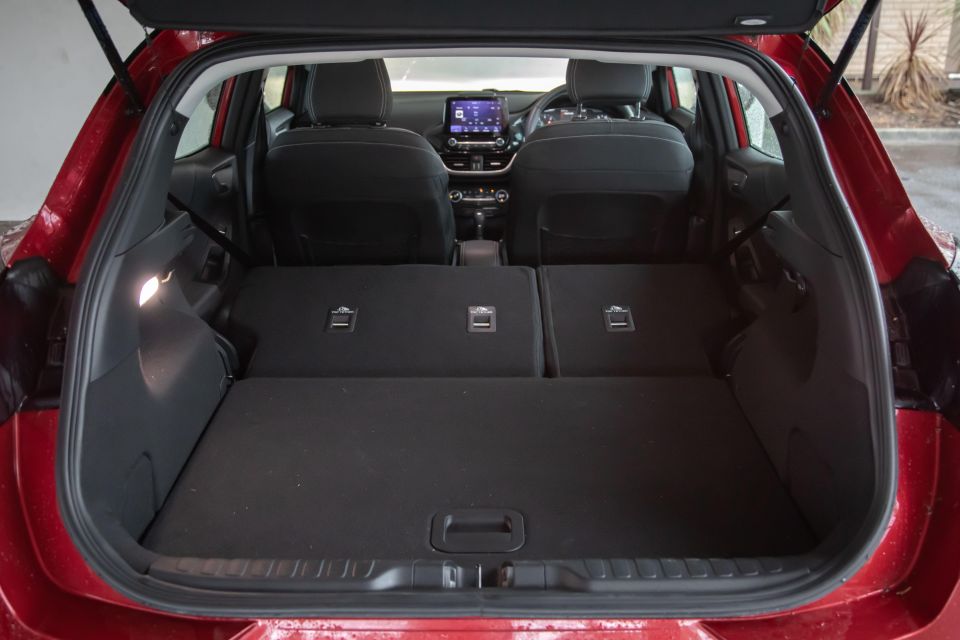
It’s not quite as capacious as the MegaBox offered overseas, but still leaves somewhere to store bathers or sweaty workout clothes without sullying the carpeted boot floor.
Given Ford Australia had the choice between the deeper under-floor storage space or adding a space saver spare tyre, we’re glad it opted for the latter. Folding the rear bench frees up 1170L of space.
All versions of the Ford Puma in Australia are powered by a 1.0-litre turbocharged three-cylinder petrol engine which produces 92kW of power and 170Nm of torque.
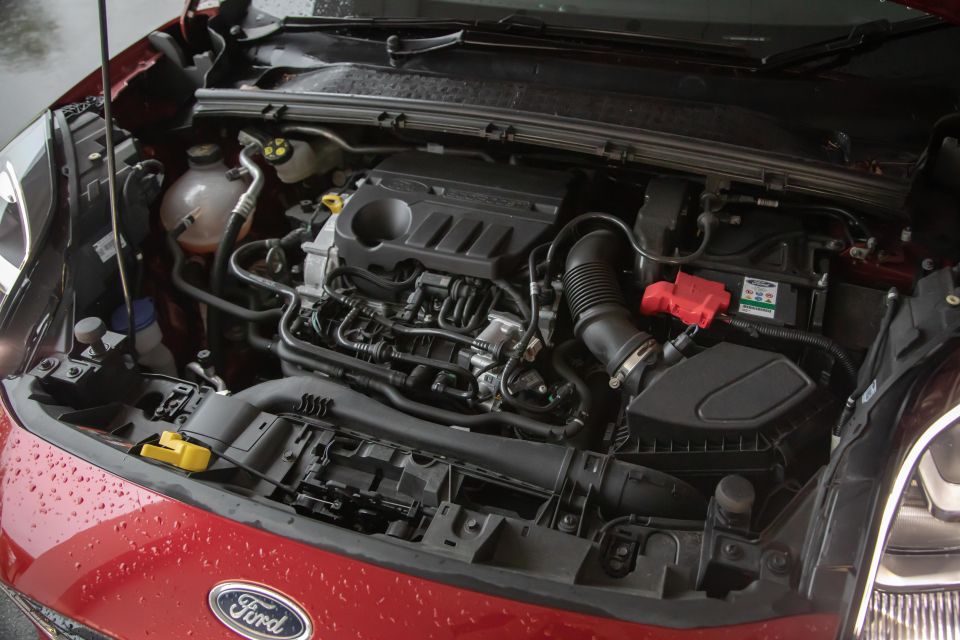
Drive is sent to the front wheels via a seven-speed dual clutch automatic transmission.
Claimed fuel economy is 5.3 litres per 100km on the combined cycle, and the fuel tank holds 42L. The Puma drinks more expensive 95 RON premium unleaded.
An electric version has been confirmed for Australia, but hasn’t yet been revealed.
Compact SUVs are often written off as shopping trolleys on stilts, cars for people who don’t care about driving. Luckily, no-one told Ford.

The Puma is a honey on the open road, simple as that. For starters the engine is determined and charming, with bags of torque off the line backed by a warm, thrummy sound in the cabin.
It shoots off the mark quickly and pulls hard through the closely-stacked gears at city speeds, never dropping out of the sweet spot between 1500rpm and 4500rpm, although it will also rev happily out to redline if the driver welds their foot to the firewall.
The seven-speed dual-clutch transmission is one of the best, to the point where it could be confused for a torque converter in most situations. Shifts on the move are dispatched without fuss, and it doesn’t exhibit the low-speed jitters that sometimes afflict small-engined cars with dual-clutch ‘boxes.
It can be slow to swap between drive and reverse, however, which makes three-point turns slightly slower than they really need to be.

The willing engine is backed by a lively chassis that’s talented beyond what most owners will ever demand. With direct steering and plenty of front axle grip, it can be flung into corners like an oversized hot hatch, and there’s a brilliant sense of balance once the car is settled on its outside front tyre.
Sure, it doesn’t quite feel as alive as a Fiesta ST, but it’s adjustable and enjoyable in a way its rivals just aren’t. Ford, bring the Puma ST to Australia. If the regular car is this good, the proper ST much be an absolute laugh.
The Puma’s talent on the open road hasn’t come at the cost of refinement. The ride is Euro-firm but never crashy, and the steering is light enough to make reverse parking a breeze.
Compared to the ST-Line V we drove in 2021, the base FWD on its 17-inch alloy wheels is more pliant again.
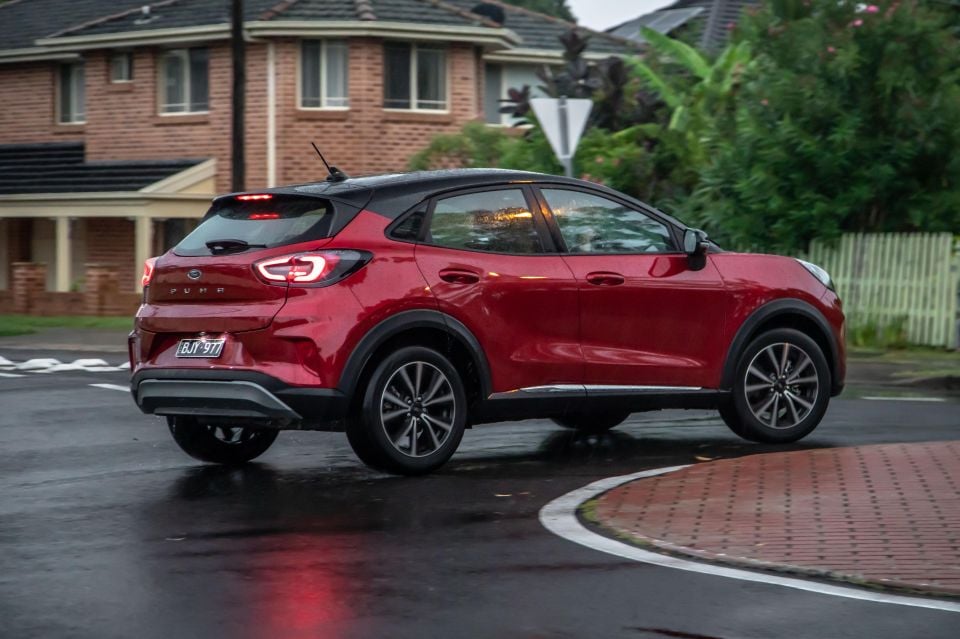
There’s a decent blind spot over the driver’s shoulder, but the array of cameras, sensors, and driver aids on hand helps make up for it.
The engine is equal parts smooth and quiet when you’re cruising, and road noise is well suppressed on smooth tarmac. It can be a bit noisy on coarse-chip gravel, though, as is common in European hatchbacks and crossovers.
The only real knock on its highway refinement is the slightly overbearing lane-centring system, which is too keen to take charge in a straight line and too easily flummoxed when it gets curvy. Thankfully it can be turned off with a button on the steering wheel.
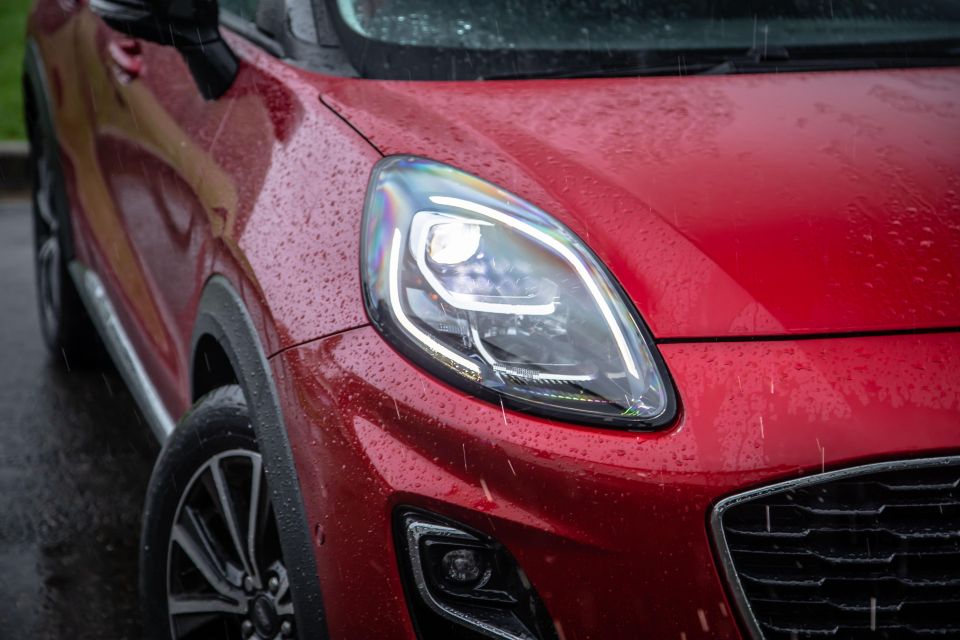

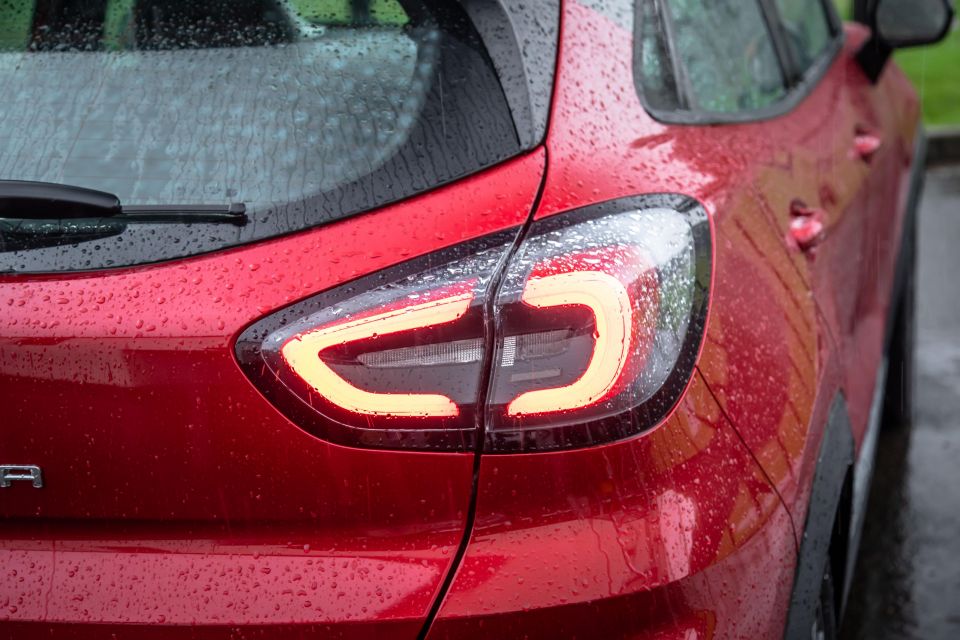

Puma FWD highlights:
The Puma has a five-star ANCAP safety rating based on Euro NCAP testing carried out in 2019.
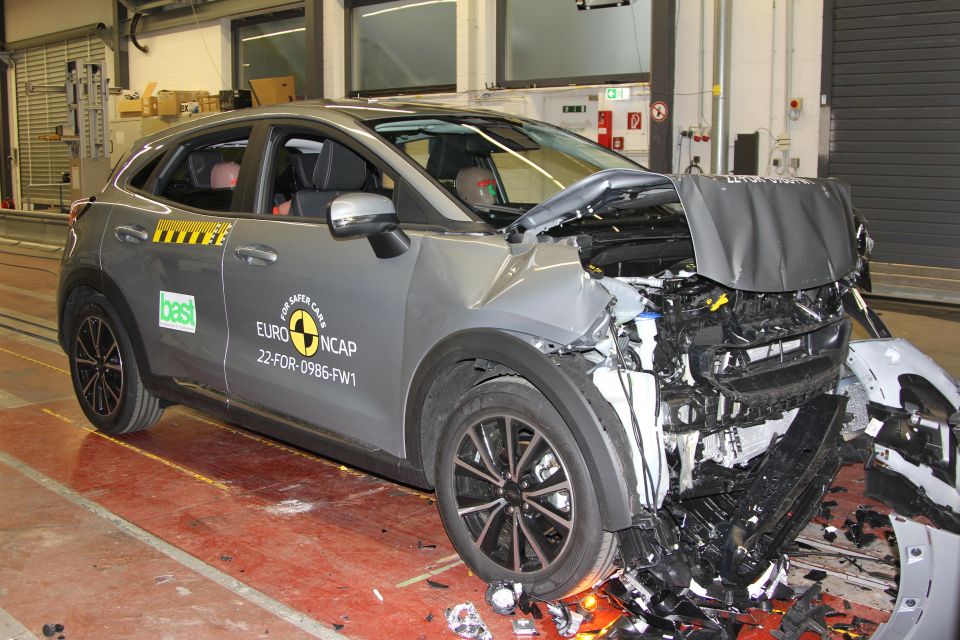
Where expert car reviews meet expert car buying – CarExpert gives you trusted advice, personalised service and real savings on your next new car.
The little SUV scored 94 per cent for adult occupant protection, 84 per cent for child occupant protection, 77 per cent for vulnerable road users, and 74 per cent for safety assist.
Standard safety features include:
The Park Pack ($990) as tested adds:
The Ford Puma is covered by a five-year, unlimited-kilometre warranty.
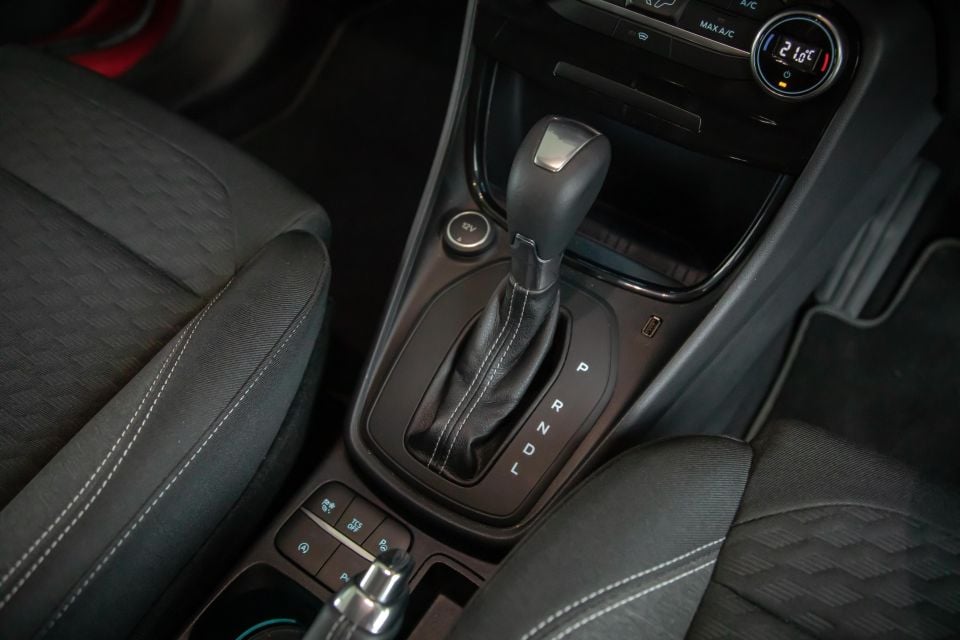
For the first four years/60,000km, Ford offers scheduled maintenance capped at $299 per visit.
Servicing is required every 12 months or 15,000km – whichever comes first.
The Puma is still the most fun you can have behind the wheel of a small SUV, and it represents pretty solid value in 2023.
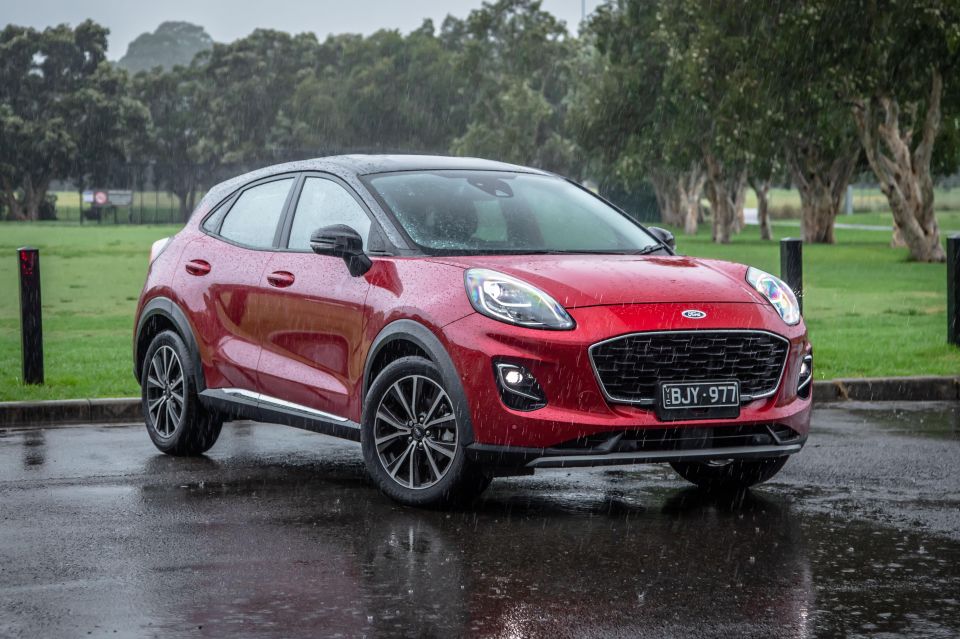
It also doesn’t want for much in base trim. Yes, the touchscreen looks a bit small, but the three-cylinder engine is keen, and there’s a full suite of active safety kit with the (optional, but affordable) Parking Pack fitted.
Yes, the back seat is tight, but the boot is very usable – and Ford still offers the Escape if you’re after something bigger. Mind you, when the Escape disappears at the end of 2023 the Puma (and its upcoming electric cousin) will have to play a bigger role again.
There are flashier small SUVs out there, but the Puma gets a lot right.
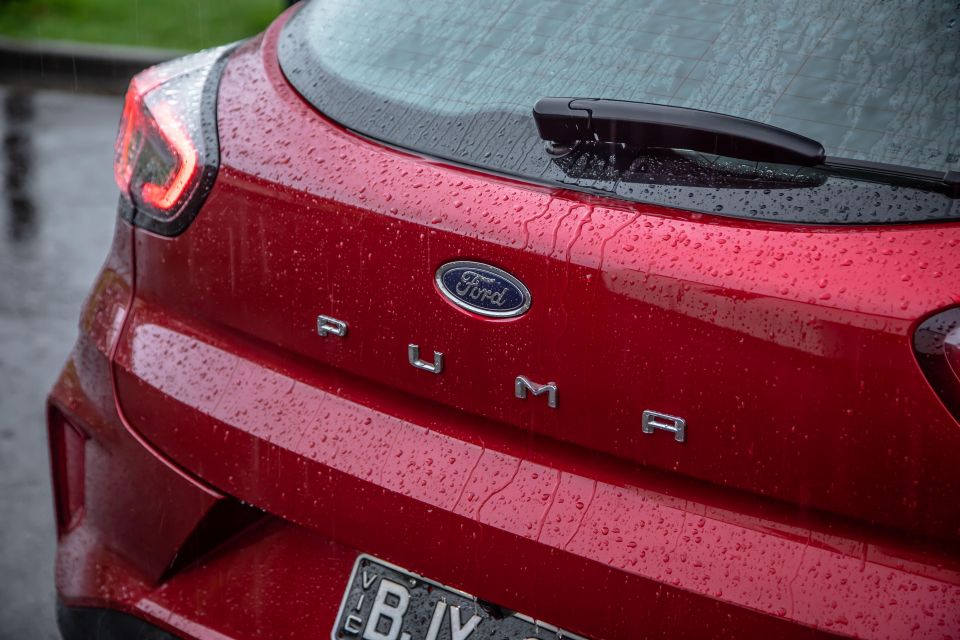
Click on an image to view the full gallery
MORE: Everything Ford Puma
Where expert car reviews meet expert car buying – CarExpert gives you trusted advice, personalised service and real savings on your next new car.
Scott Collie is an automotive journalist based in Melbourne, Australia. Scott studied journalism at RMIT University and, after a lifelong obsession with everything automotive, started covering the car industry shortly afterwards. He has a passion for travel, and is an avid Melbourne Demons supporter.


Max Davies
2 Hours Ago


William Stopford
18 Hours Ago


Ben Zachariah
19 Hours Ago


Derek Fung
19 Hours Ago


Matt Campbell
1 Day Ago


William Stopford
2 Days Ago